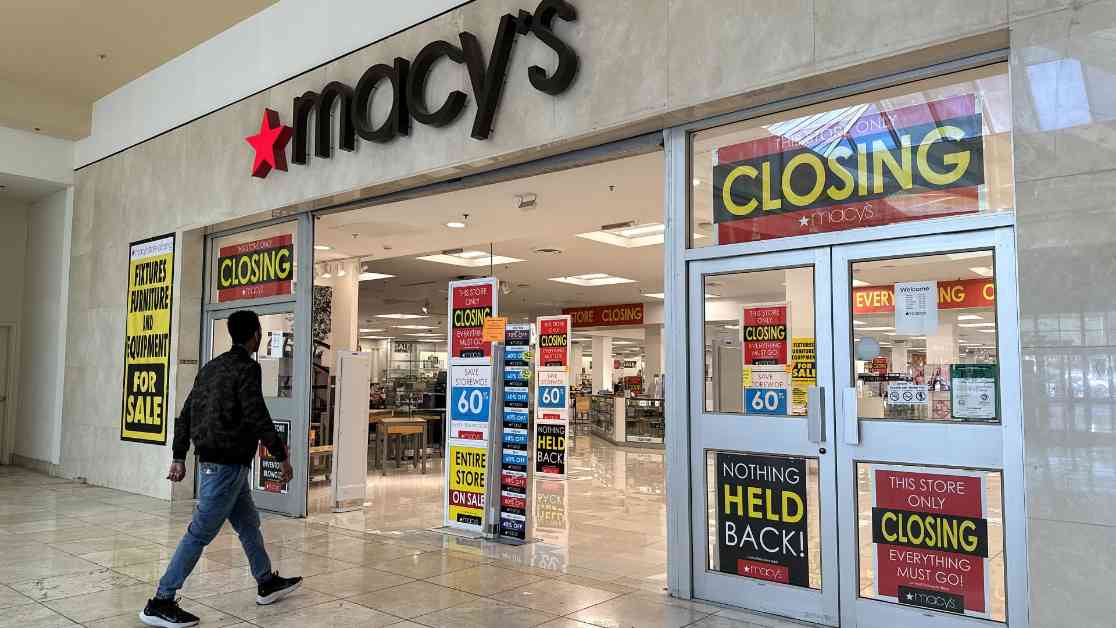Macy’s recent decision to close a significant number of its stores will have a ripple effect on shopping malls and communities across the United States. The company plans to shutter about 150 of its namesake locations by early 2027, representing a major shift in the retail landscape.
While Macy’s has not yet disclosed which specific stores will be closing, CEO Tony Spring revealed that the affected stores make up 25% of the company’s gross square footage but less than 10% of its sales. This strategic move is part of Macy’s plan to invest more in its remaining 350 namesake stores and focus on expanding its better-performing brands such as Bloomingdale’s and Bluemercury.
The closures will not only impact Macy’s, but they will also force malls to adapt to changing consumer preferences and behaviors. With the rise of online shopping and shifting demographics, the closure of Macy’s stores may prompt some malls to undergo significant transformations. This change will be an opportunity for healthier malls to revitalize and redefine themselves, breathing new life into the shopping center.
According to Chris Wimmer, a senior director at Fitch Ratings, the closure of Macy’s stores will hasten the closure of low-quality malls that are no longer sustainable in today’s retail landscape. This shift will allow owners of more robust malls to repurpose prime real estate and attract new tenants and customers.
As department stores like Macy’s continue to downsize, malls are also experiencing a transformation. Other anchor stores like Sears, Lord & Taylor, and JCPenney have downsized or disappeared, leading to a decline in the number of shopping malls across the country. Class A and B malls with higher occupancy rates have fared better compared to Class C and D malls, which have faced challenges in recent years.
To adapt to these changes, mall owners are exploring new ways to utilize vacant spaces left by department store closures. By incorporating diverse tenants such as medical buildings, co-working spaces, nail salons, and restaurants, malls can drive foot traffic and remain relevant in today’s retail environment. Some malls have successfully repurposed former Macy’s locations into a mix of retail, dining, and entertainment options.
Innovative projects across the country have transformed former Macy’s stores into unexpected spaces like grocery stores, entertainment venues, and even Amazon fulfillment centers. These projects aim to revitalize malls, attract new visitors, and create dynamic experiences for consumers.
The closure of Macy’s stores presents an opportunity for malls to reimagine their spaces, cater to evolving consumer preferences, and stay competitive in a rapidly changing retail landscape. By embracing creativity and flexibility, mall owners can breathe new life into their properties and create vibrant destinations that resonate with today’s shoppers.

















